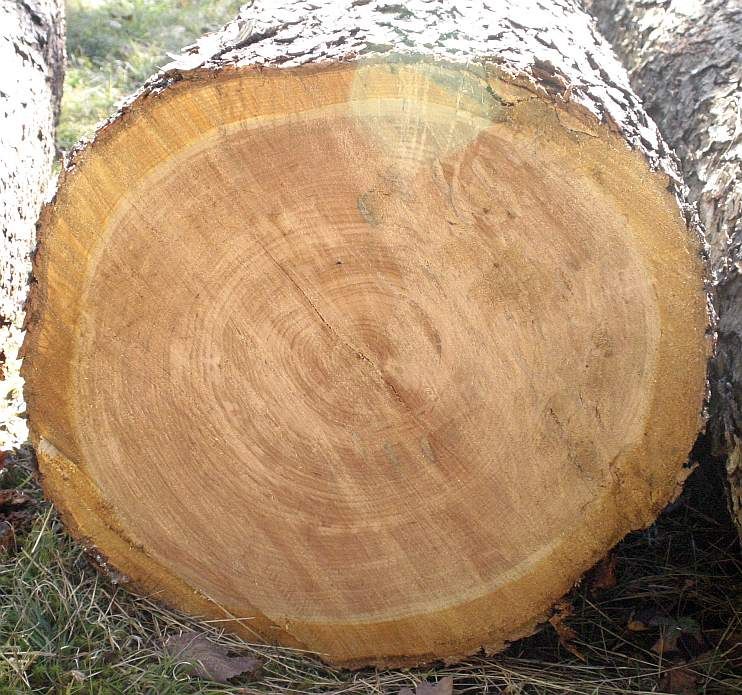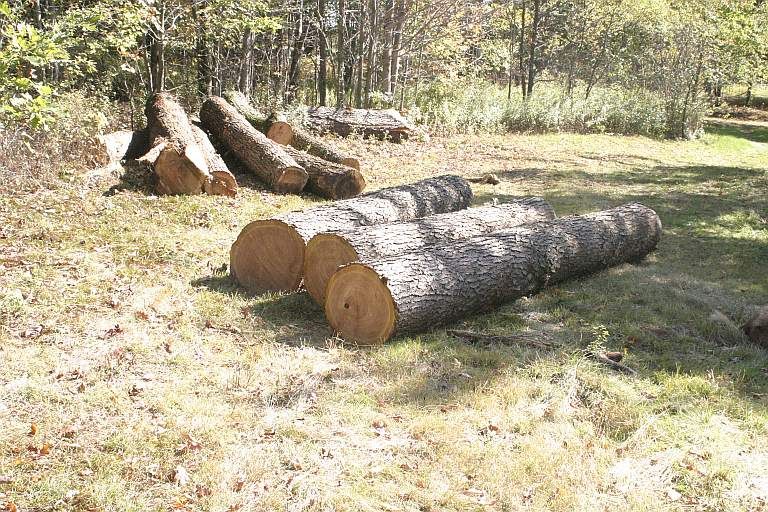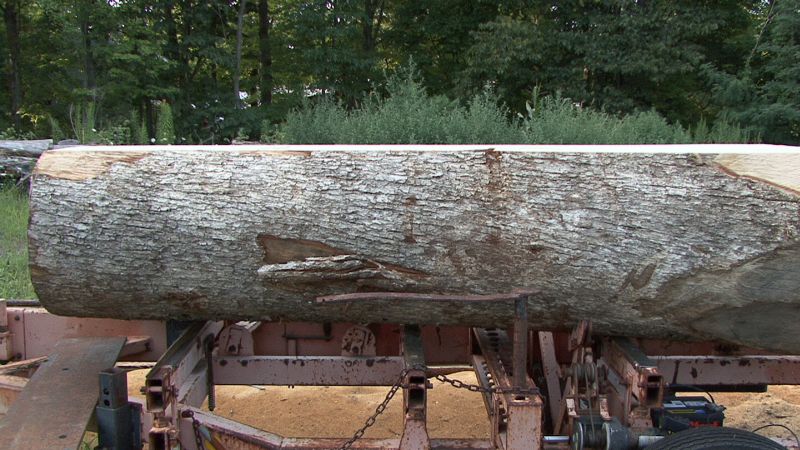Question
Less than a week ago, I took down a very nice cherry tree that has produced three beautiful logs. The logs are 19-20-21 inches in diameter at the small end, two are ten footers, and the third is a twelve footer.
A few saw-savvy people I know thought they may be veneer quality, but today a veneer buyer in my area looked the logs over, and said they weren't, mentioning that there was evidence of cluster-knots, and bird-peck.
My plan prior to felling was to first find out if they were veneer quality, and if not, saw them up with the help of a friend who has a portable band sawmill. I have no immediate use for the lumber in mind, and while I'm not chomping at the bit to sell the lumber, I'm not adverse to sawing the material in a way that would make it as potentially attractive to buyers as possible.
I've attached some cross section photos of the logs, and was interested in hearing from forum participants what they thought the best approach might be when sawing. Since the photos, I've end coated the logs. I've got a good building to store the material in (the third level of a three level older bank barn), and the fellow who has the band mill also has a de-humidification kiln. According to the Log Volume Calculator at the site, there's roughly 565 board feet (International scale) in the three logs.
I'm hoping to hear from those far more experienced in these matters then I am. I have to admit that after 13 years of being involved with WOODWEB, noting all the valuable input the Wood Doc has supplied, and observing the willingness of participants to offer their opinions gleaned from years of hard won experience, it's going to be interesting to see how what I've learned by reading applies to the real world event of sawing. I'm really looking forward to participating in the process of turning a tree into boards.

Here's a photo of the second log.

Third log.

And a group shot of the logs.

Forum Responses
(Sawing and Drying Forum)
From contributor P:
In general, cherry is flat sawn, or "plain sawn." This is the traditional cherry look. If your sawyer understands what grade sawing is, that is the way to go. In simplest terms, that means alternating cuts parallel with the bark, with the objective being to get the highest grade lumber.
Unless you have a particular reason to do otherwise, this would be the typical way to saw high quality cherry - which this seems to be. If you or your friends are more oriented toward innovation, novelty, or crafty or rustic furniture, that changes the picture. You might want to saw "through and through." That yields a variety of grain patterns.
Unless you have an active market for 6/4 or 8/4, saw 4/4. Never saw 8/4 from pieces containing wood from the center of the log, as they will be low grade and low grade 8/4 has a very poor market and low usefulness in cherry.
Comment from contributor G:
You asked specifically about value, therefore, as a fellow who's spent most of his 53 years around a mill, I'd agree with those that say saw for grade. Since you included end shots of the logs, I assume you were hoping for some comment on them. If you notice the darker red and greenish spots, avoid them in as many boards as possible by sawing on the other sides of the log first. Those spots represent streaks (mineral) in the log, which will lower the value of the boards. A good sawyer will already know that though.
